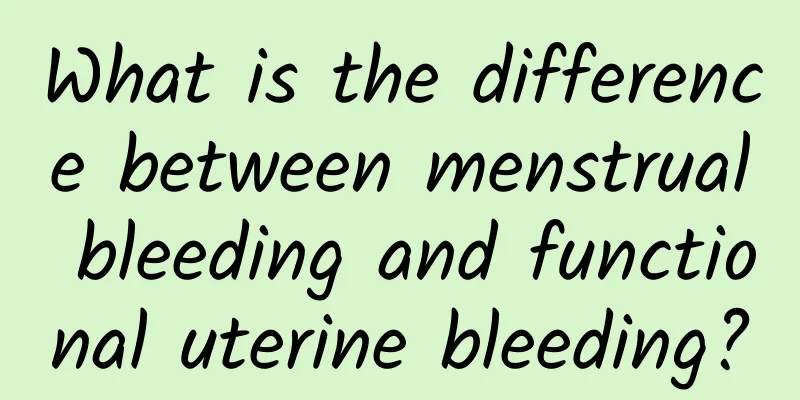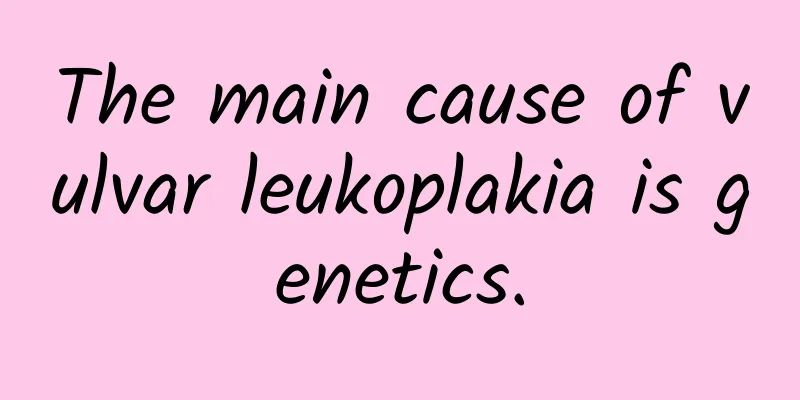What is the difference between menstrual bleeding and functional uterine bleeding?

|
Menstrual bleeding in a normal menstrual cycle is related to endometrial blood vessels. In recent years, studies on the number of blood vessels in the uterine vascular system, especially the number of spiral arteries in the endometrium, have shown that the amount of uterine bleeding is not related to the number of blood vessels. The amount of menstrual bleeding is related to the hemostatic mechanism in the endometrial vascular system. In the late secretory phase, the curvature of the spiral arteries of the endometrium increases and becomes highly spiral. Before the onset of menstruation, the spiral arteries undergo segmental and rhythmic contractions, and as the contraction time continues to prolong and the degree of contraction increases, they become spasmodic, causing local ischemia and necrosis of the vascular wall. When the blood vessels expand again and become congested, they cause vascular rupture and bleeding. The endometrium in various parts of the uterine cavity is ischemic, necrotic, and shed, and endometrial fragments are discharged with the blood, which is called menstruation. Within 24 hours after the start of bleeding, platelets aggregate at the rupture of the spiral artery and are reinforced by fibrin to form a thrombus. Within a few hours, some or all of the ends of the spiral arteries are blocked, so the amount of bleeding is not much within 0.5-1 day of menstruation. After 24 hours, the necrotic and disintegrated endometrium is completely shed, and the spiral arteries are also broken and shed. The menstrual volume increases to 70% of the menstrual volume on the second day of the menstrual period. When the endometrial functional layer is completely shed, the blood vessels in the basal layer of the endometrium are blocked by blood clots, and the endometrium proliferates and covers the uterine cavity, the menstrual blood stops, and the normal menstrual period is generally 5 to 7 days. During functional uterine bleeding, the endometrium proliferates, the blood vessels proliferate, and the blood vessels are straight. Due to the lack of progesterone, the arteries lack spiralization and venous sinuses are formed. When the endometrium ruptures or falls off, the straight blood vessels without spiralization have no segmental and rhythmic contraction, and the blood flow rate is fast, it is difficult to form thrombi, and the broken ends of the blood vessels are exposed at the endometrial rupture, and bleeding does not stop. If the venous sinus ruptures, there is no contraction function, often a lot of bleeding, and it is difficult to stop by itself. Moreover, the bleeding caused by estrogen deficiency is local bleeding of the endometrium, bleeding in one or more places in the uterine cavity, and it is not synchronized, so it presents irregular bleeding. Bleeding can only be stopped when the endometrium proliferates again and covers the wound. |
<<: Patients with ovarian cysts should undergo timely examination
>>: Ovarian damage can cause premature ovarian failure amenorrhea
Recommend
How to prevent cervical erosion from becoming cancerous? 5 ways to prevent cervical erosion from becoming cancerous
Cervical erosion is a very common gynecological d...
Several common methods of detecting ectopic pregnancy
According to recent medical statistics, the incid...
Is B-ultrasound accurate in detecting pelvic effusion? What are the precautions?
Pelvic effusion is a common phenomenon. Many wome...
How to eat well for patients with vulvar itching
I believe that many women have experienced the sy...
Do you know the relationship between female leucorrhea and vaginitis?
What is the relationship between female leucorrhe...
How to treat pelvic effusion?
Pelvic effusion is a common gynecological disease...
Clear yourself! Council of Agriculture: 97% of pig farmers signed the pledge
As clenbuterol was detected in pork, the Council ...
Dysmenorrhea treatment should pay attention to keeping warm
Dysmenorrhea is a very common menstrual disease i...
What anti-inflammatory drugs should be taken for pelvic inflammatory disease? Different types have different symptoms
Patients with pelvic inflammatory disease will ha...
Can you only eat chicken breast to lose weight? Learn this "diet formula" and you can lose weight without starving yourself
You've decided to lose weight, but where to s...
The perfect bride does this! 4 points to create a devilish figure
Three months before the wedding, you must start s...
Don’t want to get fatter as you get older? Menopausal women learn 3 tricks to say goodbye to fat belly and regain metabolism
Do you have this question too? You eat about the ...
What are the causes of miscarriage? Let's take a look at it.
There are many reasons for miscarriage during pre...
What is the situation of frequent bleeding in women with chronic cervicitis? Is blood in women's leucorrhea a symptom of cervicitis?
Cervicitis can be said to be the most common dise...
How to treat cervical cysts and ovarian cysts effectively?
The treatment effects of cervical cysts and ovari...









